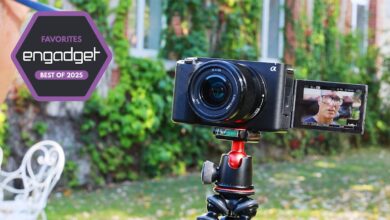The Rundown: How Amazon is wooing publishers to bolster its $50 billion ad business

By Ronan Shields and Seb Joseph • May 21, 2024 •

Ivy Liu
Amazon Advertising’s revenue neared $47 billion last year, up from 24% compared to 12 months earlier, with analysts suggesting its media earnings growth now outpaces Facebook and Google.
An eMarketer forecast maintains the e-commerce giant’s advertising revenue will top $67 billion by 2025, and earlier this week at Amazon Publisher Services’ summit, it revealed new features (it hopes) will help its edge closer to that number.
Here, APS announced several new features spanning its full product suite with updated features for the cleanroom offering it first unveiled in beta last year, topping the bill at its New York City earlier this month.
Amazon also debuted an advertising ID service, dubbed Signal IQ, aimed at helping publishers and buyers fill the measurement and targeting gap left by the impending sunset of third-party cookies.
Additionally, APS has also extended Transparent Ad Marketplace (TAM) to support all streaming TV publishers, streamlined demand and deals.
Amazon Publisher Cloud comes out of beta
The newly unveiled features for Amazon Publisher Cloud include a number of opportunities for advertisers to directly access ad space with a host of household-name publishers, including a tie-up with Omnicom Media Group.
All of these features — see the list below — aim to facilitate the growing privacy requirements of online tech platforms and governmental requirements. Dotdash Meredith, FOX and Tubi, Hearst Magazines, NBCUniversal, Newsweek, Warner Bros. Discovery and The Washington Post were all named as launch partners, among others.
- Audience Collaborations lets advertisers activate custom audiences directly with participating publishers
- Automated Deal Curation lets publishers package eligible inventory to sell via Amazon’s demand-side platform
- Omni Audiences lets OMG clients buy ads enhanced with insights from the media agency, publishers, and Amazon Ads
- Integrations with third-party ID-providers beginning with LiveRamp
- New in-flight performance metrics
Signal IQ debut
Meanwhile, APS also unveiled plans to help advertisers bridge the gap between the status quo and one where its traditional campaign targeting and measurement tools are no longer fit for purpose, i.e. the demise of the third-party cookie.
This includes, principally, the launch of Signal IQ, a measurement solution to help digital publishers assess the impact of third-party IDs available in their marketplace, such as LiveIntent and Yahoo ConnectID.
Amazon has been eyeing its opportunity in the space for some months, with Signal IQ using A/B testing to examine signal performance. Scott Siegler, director of product at APS, claims it will help publishers establish what signals drive performance so they can optimize addressability.
All these moves are part of Amazon’s broader strategy: to secure more ad dollars by allowing advertisers to reach Amazon users beyond its own ecosystem. While Amazon has offered this for years, there’s now more pressure on all sides of its ads business, including the publisher segment, to perform better.
That’s because these ads don’t tend to perform as well for advertisers as those in Amazon’s own ecosystem. This is expected since Amazon can more easily show advertisers how their ads drive sales within its ecosystem.
However, the gap in performance between these ads and those on publisher sites could be narrowed. That’s why the Amazon Publisher Cloud is so important to the compant: it provides a way to close that gap and strengthen Amazon’s overall ads business.
Needless to say those dollars are a big focus for the business right now. Amazon CEO Andy Jassy has said as much, emphasizing that the high-growth, high-margin ads business will drive the next phase of revenue and profit growth amid rising costs and industry changes.
Everything that has happened this year to that business makes this clear. Amazon has already made the ad tech needed to buy display and video ads on its site a bigger part of its pitch to advertisers, launched its own machine learning buying tech called Performance+, and introduced ads to its Prime Video service earlier this year.
https://digiday.com/?p=545450


